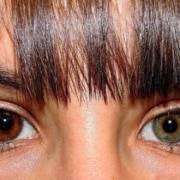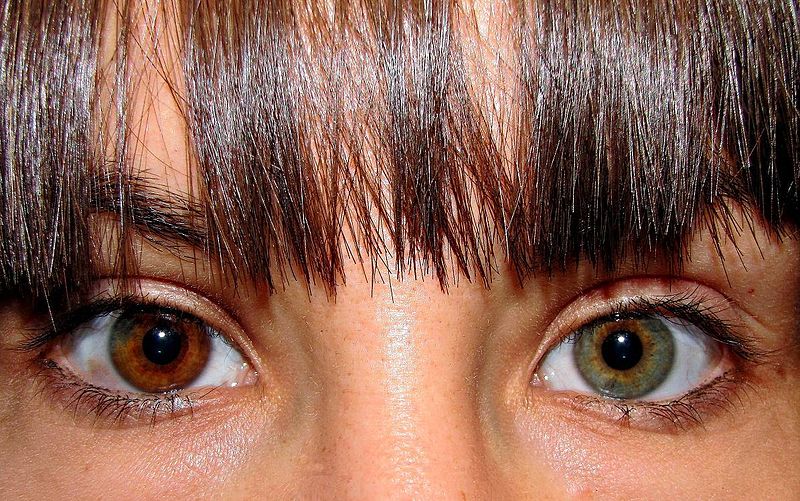The Eyes Have It: Where to Look in Media Interviews and Presentations
Whether you are being interviewed on camera, giving a presentation in the room, or involved in a live video conference, where you choose to look can make all the difference.
What you do with your eyes – which the old saying would have you believe are ‘windows to the soul’ – not only indicate how confident or professional you are, but also help you connect with your audience.
Nevertheless, how you use them depends which environment you are in.
Here’s a quick guide with all the answers…
Media interviews with the journalist present:
The simple rule of thumb is as follows: if the journalist is with you, you should look at them.
In other words, ignore the presence of the camera and stare directly at the journalist instead; the bridge of their nose is a good place to aim for. Admittedly, this can feel rather odd after a while (remember to blink normally, though), but it’s the best way to look professional and relaxed.
The problem is that from the audience’s perspective, letting your eyes dart around all over the place (as many people are prone to do while they’re thinking) can make you look nervous and shifty. So, try to think of what you want to say next whilst keeping your eyes fixed in the same place as much as possible.
Similarly, according to the grammar of television, looking at the camera in this situation appears to turn you into a ‘presenter’. That’s what the audience are used to seeing, and they can find this apparent change in role quite disconcerting.
Media interviews with the journalist in a remote studio:
Often known as ‘down-the-line’ interviews, as there is no journalist around, you should look directly into the lens of the camera.
Again, you should keep your eyes fixed in the same position throughout – even if looking down the lens for any length of time can feel quite awkward. Continue blinking as usual and from the viewers’ perspective you will appear at your most calm and considered that way.
If there is a monitor nearby, showing a live image of what is going on (not helpful), ignore it. You’ll find it extremely off-putting if you catch sight of it, and your eyes will no longer be looking into the camera – which is where they should be!

Eric Dixon speaking directly to camera
Presentations in the room:
The key thing here is that you should spend more time looking at the audience than you do at your script or PowerPoint slides.
If you are constantly looking down at notes or to the big screen behind you, the audience will get an excellent view of either the top of your head or your profile respectively, but not your eyes. If this is the case, you will also not be able to see them. The best presenters constantly adapt what they are doing and saying according to the audience’s reaction – and if you aren’t looking at them you won’t know how they are responding.
With big audiences, let your eyes scan across the room while you’re talking, trying to glance at each section of the audience for around three seconds at a time. Some people find it helpful to imagine a giant ‘W’ or ‘M’ positioned over the heads of the audience, and to let their eyes trace the general shape of the letter as they’re talking.
Occasional glances at your notes, laptop or the screen behind you are OK, but the vast majority of your attention should be directed at the people you are talking to.
Being interviewed or presenting via video call:
The rise in popularity of Zoom, Teams and Webex means that this is the way some media interviews and presentations are now carried out. If this is the case, treat the situation exactly like a ‘down-the-line’ interview in a professional studio, and keep your eyes fixed on the camera throughout, or if a long meeting, as much as possible.
Ideally your camera should be above the main screen you are using (rather than on a separate screen to one side). Try to avoid the temptation to watch images of yourself or the people you are talking to on the computer screen below – from the audience’s perspective, your gaze will be slightly ‘off’ if you do this. Instead, the camera lens needs your full attention.
So that’s it!
The position of your eyes – or what we call ‘eyeline’ – is absolutely crucial to get right, and, as we’ve illustrated, is not difficult to carry out.
It’s also part of what we offer in our media training and presentation training sessions.
Remember – in short:
• Is the journalist or audience present? Look at them.
• Is the journalist or audience operating remotely? Look at the camera instead.
Image:
This file is licensed under the Creative Commons Attribution-Share Alike 4.0 International, 3.0 Unported, 2.5 Generic, 2.0 Generic and 1.0 Generic license.
- Introducing the ‘Act Out’: - October 29, 2024
- Politics as Entertainment - July 2, 2024
- All Presenters Need a Critical Friend - April 23, 2024





Leave a Reply
Want to join the discussion?Feel free to contribute!